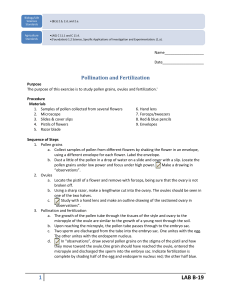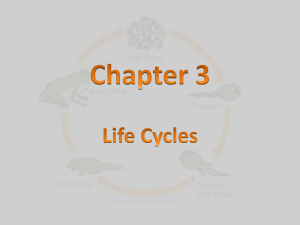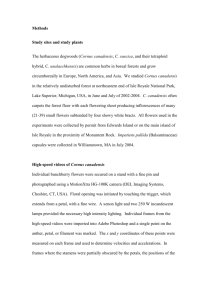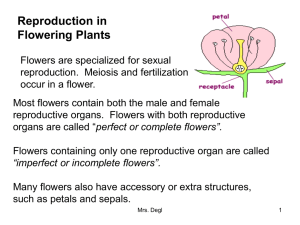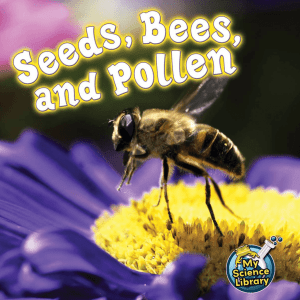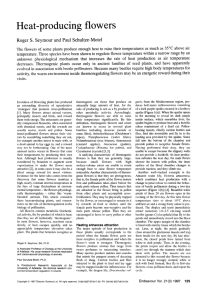Reproduction_I
advertisement
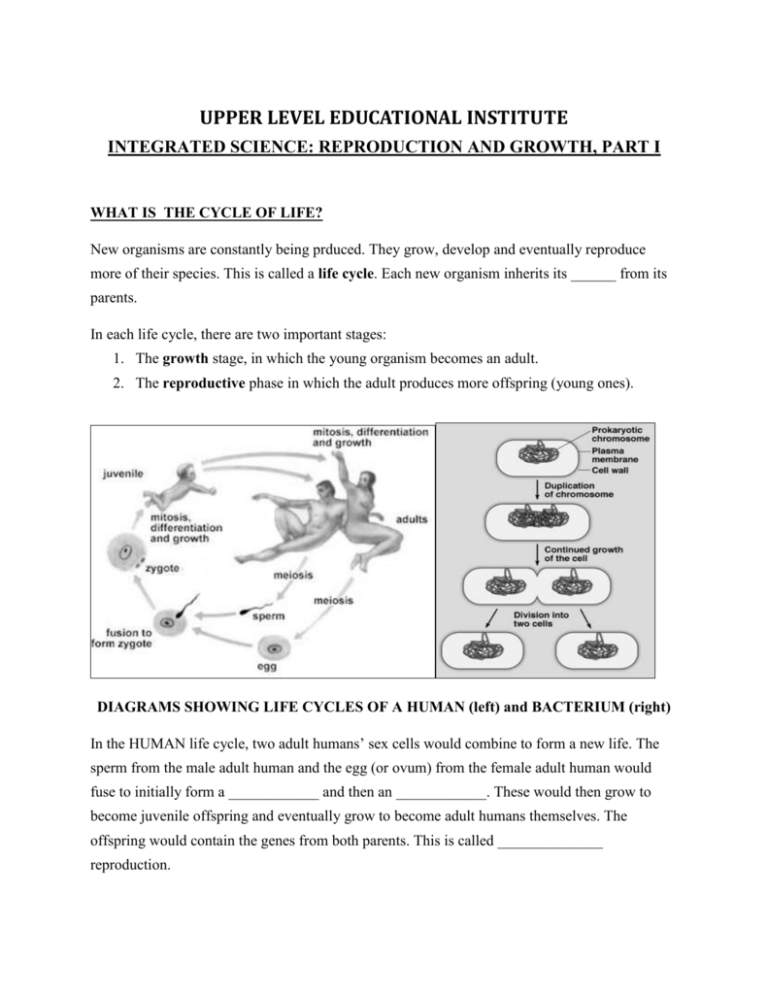
UPPER LEVEL EDUCATIONAL INSTITUTE INTEGRATED SCIENCE: REPRODUCTION AND GROWTH, PART I WHAT IS THE CYCLE OF LIFE? New organisms are constantly being prduced. They grow, develop and eventually reproduce more of their species. This is called a life cycle. Each new organism inherits its ______ from its parents. In each life cycle, there are two important stages: 1. The growth stage, in which the young organism becomes an adult. 2. The reproductive phase in which the adult produces more offspring (young ones). DIAGRAMS SHOWING LIFE CYCLES OF A HUMAN (left) and BACTERIUM (right) In the HUMAN life cycle, two adult humans’ sex cells would combine to form a new life. The sperm from the male adult human and the egg (or ovum) from the female adult human would fuse to initially form a ____________ and then an ____________. These would then grow to become juvenile offspring and eventually grow to become adult humans themselves. The offspring would contain the genes from both parents. This is called ______________ reproduction. However, in the BACTERIUM life cycle, there are no sex cells being produced and thus no zygote. Bacterial reproduction occurs in this order: 1. 4. 2. 5. 3. The bacterial offspring are identical. These identical offspring form a group called a _________. These offspring have the same exact genes. They would be identical generation after generation. This is called ________________ reproduction. QUESTION: Give ONE disadvantage of asexual reproduction. ANSWER: DIAGRAMS SHOWING LIFE CYCLES OF HUMAN (LEFT) AND BUTTERFLY (RIGHT) VARIATION The biologist Charles Darwin first developed the theory of natural selection. The basis of the idea is: Individuals in populations (groups of one species in an area) vary. Some are better suited to the environment than others. These survive better and breed. More of them pass on the genes that make them better adapted. In the next generation, there is a higher proportion of better adapted individuals. EXAMPLE 1: Imagine there is a kind of beetle with two types of genes: a “green” gene and a “red” gene. Imagine there is a predator bird that ONLY eats the “green” beetles. The red beetles are therefore bettered adapted in the environment where these birds exist. The red beetles, therefore, would fluorish more than the green beetles over the generations. Similarly, in another environment, there may be birds that only prey on the red beetles. The green beetles would therefore fluorish better there. Over the generations, the red beetles and the green beetles in both environments may actually become so different from generation to generation, they may seem like entirely different species. EXAMPLE 2: PHOTOS of the PEPPER MOTH in two environemts. The peppered moth is shown above in two environments. It is interesting to note that in areas where industry has thrived and the coal-burning factories produced more blackened areas in the city, more instances of the black moth were found. But in the forests where the barks were lightcoloured, more instances of the white moth were found. Why is this? ANSWER: CUTTINGS AND MICROPROPAGATION When gardeners wish to reproduce their favourite plant exactly, they veryoften take cuttings. When a gardener takes a cutting, part of the plant grows into a new plant, which therefore will have the same genes as the original. The environment will probably produce a few changes, however, but the plants will be almost identical. 1. Tear a side shoot off (or take a cutting from) the plant. 2. Dip the shoot in rooting powder. 3. Plant in a compost box. 4. Place under glass. All the cuttings will grow into genetically identical plants. Another technique is called MICROPROPAGATION. Take a look at the diagram: Three uses of micropropagation: 1. Micropropagation is used to produce thousands of identical plants for sale on special occasions. 2. It is also highly used for the propagation of banana plants. 3. It is used to help and conserve endangered plant species. HOW DO PLANTS REPRODUCE? Most plants can reproduce sexually AND asexually. But some can only reproduce sexually and others can only reproduce asexually. DIAGRAM OF A FLOWERING PLANT Flowering plants reproduce sexually by producing seeds. The seeds are formed from structures in the flowers. The male sex cells of plants are inside ______________________. The egg cell is the female sex cell and is found in the _____________. When these two sex cells fuse, they form a ____________, which develops into a _________. Plants must first transfer the pollen grains from an _____________ to a ____________. This is called ___________________. It usually occurs between flowers on diferent plants of the same species. Pollination between two different flowers is called __________________________. Pollination within the same flower is called __________________________. Cross-pollination takes place in one of two main ways. Some flowers use the wind to transfer pollen – they are wind-pollinated flowers. Others use insects to transfer the pollen – they are insect-pollinated flowers. These different types of flowers have the same basic structures, but they look quite different: INSECT-POLLINATED FLOWERS have: 1. Bright colours and scents to attract insects to the flower. 2. Scent and patterns (or guide lines) on the patterns to guide insects into the flower. 3. A sugary nectar to provide an incentive or ‘reward’ for the insects to visit the flower. WIND-POLLINATED FLOWERS have: 1. A few tiny petals so that stamens (contains pollen) can easily into exposure to the wind. 2. Feathery stigmas, so as to ‘catch’ pollen flying through the air. 3. Vast amounts of pollen to increase chances of being pollinated. FLOWER P IS ____________________________ FLOWER Q IS ___________________________ FERTILIZATION Following pollination, the following occurs: 1. The pollen grain grows a tube down through the style to one of the ovules inside the ovary. The nucleus of the pollen grain passes down the tube. 2. When it reaches the opening to the ovule, the pollen grain nucleus passes into the ovule and fuses with the egg cell nucleus in the ovule. This is called FERTILIZATION. 3. The fertilized ovule develops into a ________. 4. The ovary becomes a __________ and these may contain several seeds or just one. GERMINATION: A seed contains an embryonic plant and a food store enclosed in the seed coat or _________. Once formed, seeds are usually dispersed from the parent plant (so that the new plant that grows won’t compete with the parent for light, water and minerals). After a period of _______________, the germination of the seed begins. This is often triggered by an intake of water and the appropriate temperature. In a seed, the young root or _____________ emerges first, followed by the shoot or ________________ (plumule). These then grow and branch as the young plant develops.



